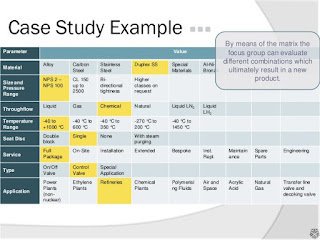 Innovation can mean doing something completely new, but it can also mean a new combination of things that already exist. But how is this achieved?
Innovation can mean doing something completely new, but it can also mean a new combination of things that already exist. But how is this achieved?The concept of morphology stems from the study of biological structures and configuration.
In the 1930's Swiss physicist Fritz Zwicky at the institute of technology in California developed a problem solving method using what he called morphological boxes, in which a new entity is developed by combining the attributes of a variety of existing entities. This method, which was initially applied by Zwicky to jet engine technology, also began to be used in marketing strategies and the development of new ideas.
HOW IT WORKS
For the development of a new care, for example all the relevant parameters (e.g vehicle type, target group) are noted, and as many attributes as possible are ascribed to each parameter. This requires expertise as well as the imagination the aim is to create something new out of something that already exists. The result in the case is a two-dimensional table (Although a morphological box can have up to four dimensions)
The next stage requires brainstorming: the car has to be an SUV, say it but it also needs to be energy efficient and inexpensive to manufacture. Which attributes match these requirements? Connect your chosen attitudes with aline. This new configuration of attributes can form the basis for an evaluation of your desired car. Besides the morphological boxes, the SCAMPER checklist developed by Bob Eberie will also help you to reconfigure an existing idea or product. The following seven key questions are drawn from a questionnaire developed by Alex Osborn the founder of the advertising agency BBDO.
Substitute? substitute people components, materials.
Combine? Combine with other functions or things.
Adapt? Adapt functions or visual appearance.
Modify? Modify the shape texture or acoustics.
Put to other use? Other new combined uses.
Eliminate? Reduce simplify, eliminate anything superfluous.
Reverse? Use conversely, invert, reverse.
The task is not so much to see what no one has yet seen, but to think what nobody yet has thought about that which everybody see. Arthur Schopenhauer
No comments:
Post a Comment